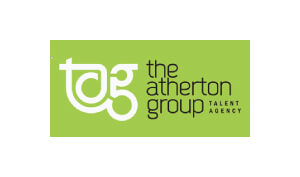I started working on a plan to create a full-service, professional mobile voiceover and production studio comparable to my home studio about a year ago. It began when I purchased my Universal Audio Apollo Twin and began tweaking it to get the best sound of my career. Once I realized that Universal also made the UA Arrow, I began planning how to get the best sounding commercials out of a mobile voiceover studio.
Voiceover and audio professionals are very particular about their sound. While it’s the talent that gets you the VO gig, a persons sound can quickly ruin for them. Throughout my career I’ve had moments of sound issues. There have been times when there was noise from the background, or reflection from the room. But in all those moments I was able to fix those issues, except when it came to my mobile voiceover studio. Those issues are much harder to fix.
Because I travel for both business and frequent adventures around the world, it’s important to be able to record wherever I go. I have been caught off guard and had to even record a radio imaging voiceover in the bathroom of IAH moments before I boarded a 10 hour flight to Brazil. I had no other options. It was me, my cell phone and an echoey bathroom and a job that had to be turned in before I landed. I also once recorded in the parking lot at the airport in San Jose, Costa Rica with my mobile voiceover rig. When I listen back on the sound of those recordings, they all sound bad. There are various problems with a mobile studio. The first of which is that you can’t control your environment.
Most talent aren’t recording in the bathroom of an airport. They are recording in a hotel room when on vacation. And mostly these environments are out of the control of and unknown to the voiceover talent before entering the situation. We use things like pillow forts and kaotica eyeballs to get the best sound but I’ve never been able to get the same sound that I get at home. I think part of the reason is that the home studio isn’t mimicked by the mobile studio.
Even though I have a better environment at home, I also have better equipment that filters the environment. At home for example, I have a DBX 166 exclusively to gate noise. As you can imagine, carrying that around “on holiday” would be quite awkward. So instead, whatever hardware I have for the mobile voiceover studio has to do the same as the home studio, but in a much more compact form.
I’ve tried the iRig Mic Studio, the Steinberg UR 22 and most recently the Focusrite 2i2 recording bundle, but none of them gave me the same warm compressed sound that I get at home. And none of them offer the same plug-ins. So when I found out that Universal Audio created a thunderbolt compatible smaller version of the Apollo, I was super excited. The only problem is that my PC was not thunderbolt compatible. So in September of 2018 I bought a Dell XPS 15 (9575). I loved the big bright screen and the portability of it.
I then purchased a gently used Rode NTG3. At home I have a Sennheiser 416 but didn’t want to carry that around with me everywhere I go. It’s a tough piece of gear but it’s also expensive. I was able to get the Rode NTG3 from eBay for only $300. Additionally I purchased several plug ins by Izotope like RX 6 and another Plug-in which cleans up audio that my good friend and colleague Jean Francois Donaldson swore me to secrecy about. Now all I needed was the same interface.
The UA Apollo has grown in popularity among voiceover talent over the past few years. I purchased mine in 2016 at the recommendation of an old High School friend who is now a world class engineer. The plug-ins that come with this thing are incredible and duplicate the sound of some of the greatest analog hardware in the history of gear. Plus the dedicated DSP chip processes the audio on the Apollo itself, relieving your computer of the strain.
The UA Arrow does the same but with one less DSP chip for slightly less power out the box. It offers the same on screen interface to allow you to control your studio like a pro studio. None of the other audio interfaces that I’ve tried had the same level of control. And out of the box, the UA Arrow has the same plug-ins that I mix with like the Precison Rack Strip. The Arrow also has the DBX 160 plug-in and the UA 610 which both recreate the effects of hardware that I use in my home studio. In fact included in both the Arrow and the Apollo are the:
UA 610-B
UA 1176LN Legacy
UA 1176SE Legacy
Ampeg SVT-VR Classic
Marshall Plexi Classic
Precision Channel Strip (Precision Mix Rack Collection)
Precision Reflection Engine (Precision Mix Rack Collection)
Precision Delay Mod (Precision Mix Rack Collection)
Precision Delay Mod L (Precision Mix Rack Collection)
Pultec EQP-1A Legacy
Pultec-Pro Legacy
Teletronix LA-2A Legacy
Raw Distortion
RealVerb Pro
It’s still early. I haven’t fully tested the system with all of the components in an uncontrolled environments. But the elements are there and this is the best hope I have for having a mobile voiceover studio that sounds like my home studio. If you’re an established voiceover talent, please share your experience with the Universal Audio Arrow or with the mobile gear you use. I am always keeping my eye open for new audio tech.


